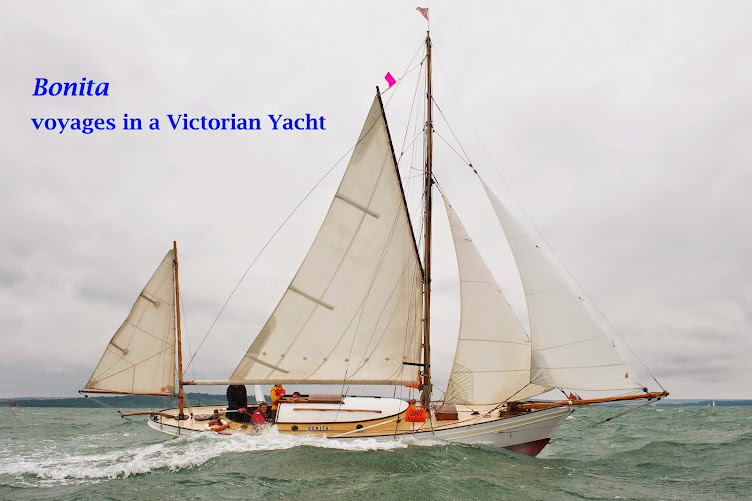 |
| Bilgeboot Bonitas |
On Thursday morning we said goodbye to Alice and Allan at the Amsterdam marina as they sadly did not have enough time left for the North Sea crossing. Dave, Bryony and I motored down the North Sea canal in light Southerly winds to Ijmuiden to lock out into the sea.
The first photo taken in the canal shows the Bonitas, a craft perhaps more functional than elegant. She is, it will be seen, a bilgeboot which collects oily waste from other ships. The crew gave us a wave and thumbs up signs. We followed her into the lock.
However enjoyable the canals have been, locks and opening bridges are hard work and there is a feeling of relief and excitement when the last lock opens to reveal the expanse of open sea beyond. We left Ijmuiden in a flat calm, but within an hour or two this developed into a northerly breeze which developed into a fine easterly wind which lasted all night. In the morning we were off the Essex Coast near Harwich, but it was misty and we never saw anything of Essex.
 |
| Bryony at Shivering Sands Fort |
We spent Friday threading our way through the sandbanks of the Thames estuary. The second picture shows Bryony steering us past the deserted Shivering Sand fort off the Kent Coast that evening.
Shortly after this picture was taken our easterly wind abruptly changed to a moderate southwesterly. After a few tacks we motored into the Swale. It was completely dark by the time we had arrived in the river and picked up our buoy.
After we tidied the boat we were sitting in the cabin having a late supper when there was a strong westerly squall with torrential rain. It blew hard all night and we were grateful not to be beating against it out in the North Sea.
And so this is the end of this years Dutch cruise. We always enjoy trips to Holland as they offer a bit of everything: open sea and canals; locks and bridges; cities and villages; culture and countryside and always with a people who appreciate everything to do with boats. This year's trip has been especially memorable because of the marvellous organisation of the Dutch OGA for their tenth anniversary cruise and we very much enjoyed being their guests.
.jpg) |
| Bonita 1938 - GWH Beckett standing on the after-deck |
As a final comment, this year we are remembering the centenary of the start of the First World War.
Bonita was in Bridlington then and it's unlikely she was sailed much in those years, if at all. The last picture was taken around 1938 at Holehaven Creek. Standing on the after-deck is my grandfather George W H Beckett. He was proud to be an 'old contemptible', a member of the British Expeditionary force that fought at Mons in the early days of the war. The Kaiser regarded the BEF as a 'contemptible little army' and the name stuck.
 |
| Receipt for purchase of Bonita |










































